Can you guess what it is: 23 the mysterious object from the past
Categories: History | Science | World
By Pictolic https://pictolic.com/article/can-you-guess-what-it-is-23-the-mysterious-object-from-the-past.htmlWe offer to your attention a selection of the very strange things from the past, the purpose of which today understand not everyone.
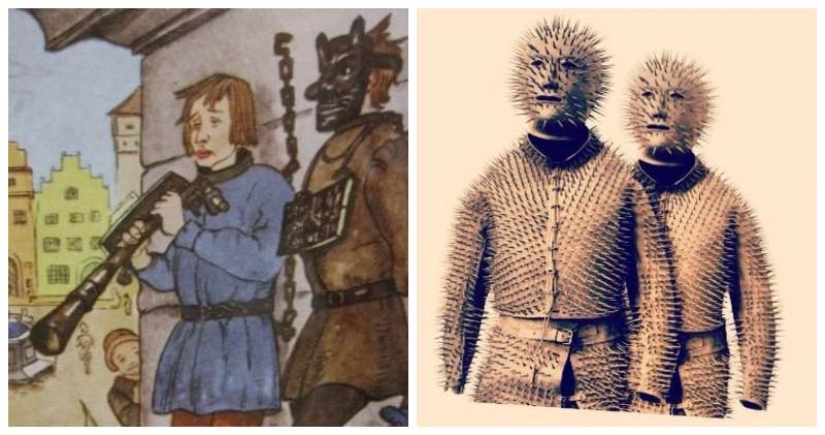
How do you think that is? Costume? Robe of the adepts of secret cult of the divine hedgehog? Jacket for opponents of hugs and kisses? Almost. In front of us — the costume is for bear hunting. Of course, alone, even in the same outfit on the bear better not to go, but for group hunting from repeated blow with his paw could save.
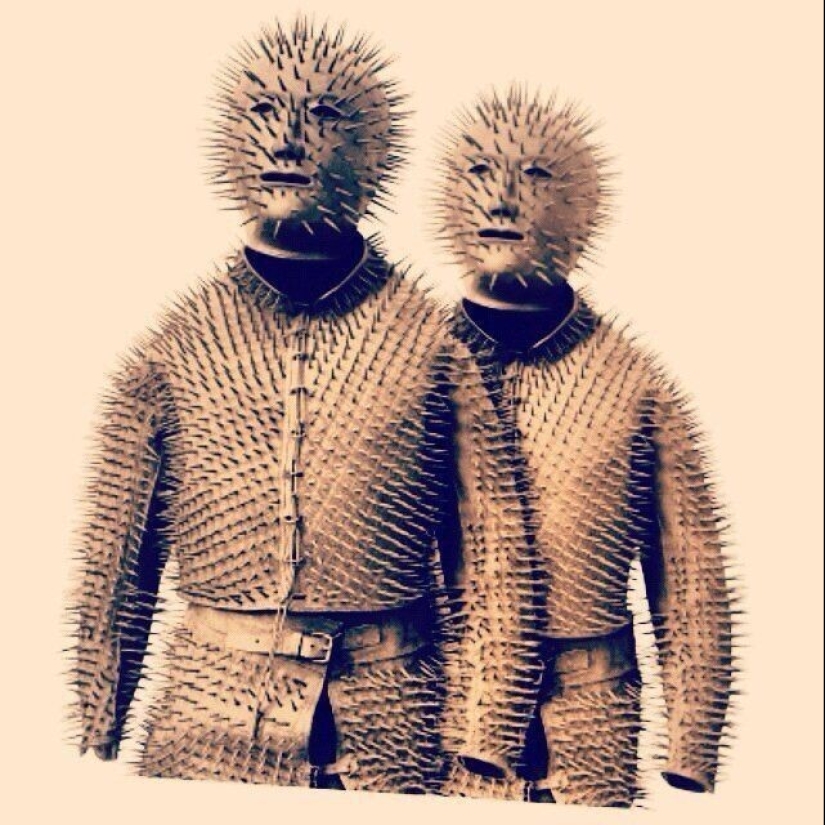
For hunting alone such "mail", of course, was too heavy: it's hard to imagine that this outfit people would be free to move about and even more to run fast. But when this was not necessary (for example, in battle or when hunting went in a group), the suit is well protected from the bear's bites and blows paw.
The earliest apparatus for testing the strength of gun powder from those about which there is record, was invented by Bern in 1578.
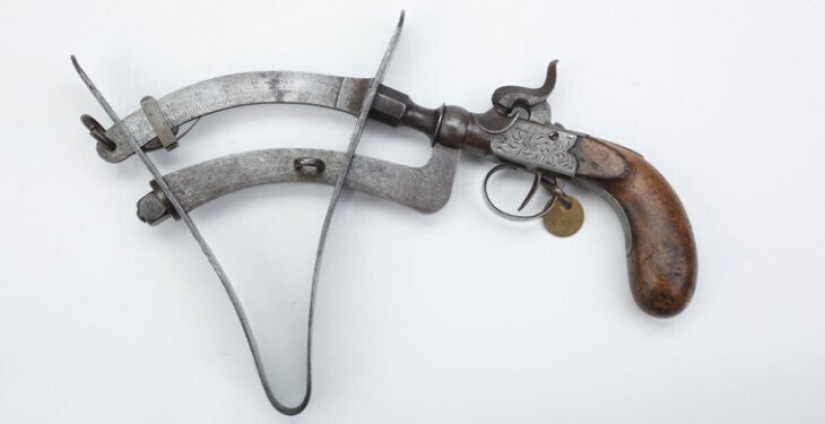
It is a small cylinder with a tightly fitting lid on a loop. Gunpowder had exploded inside and the angle at which the lid was raised, was thought to have indicated the strength of gunpowder.
In fact, it is just a model of the eyeballs (they are made as hollow spheres, moving around its own center of rotation).
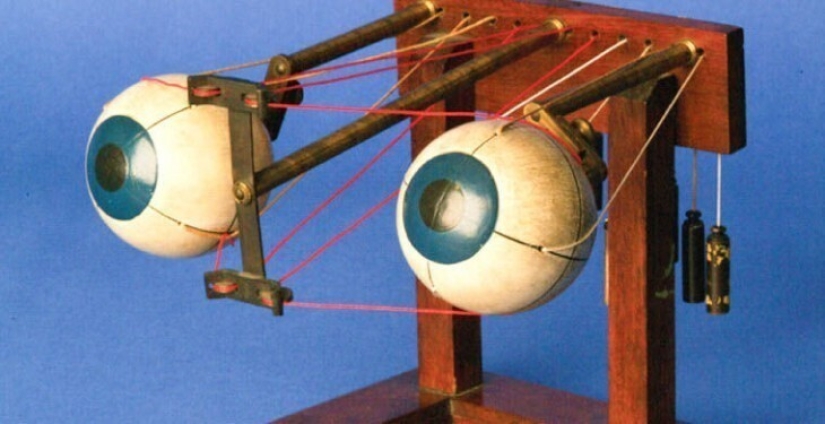
Eyeballs are set in motion eye muscles are the muscles doing here six cords attached in different places of the eyeball and waste ago, as in real eyes. All cords thrown over blocks and balanced by weights. Pulling one or the other cord, accordingly rotates the model of the eyeball.
As is well known from the literature of the nineteenth century, ladies of those times constantly fainted. Often, however, the cause of syncope was not the emotion, and too tight corsets, evaporation from the Wallpaper (often in the paint contained arsenic or lead, which led to the poisoning) or simply bad smell in the streets, not knowing the sewer.
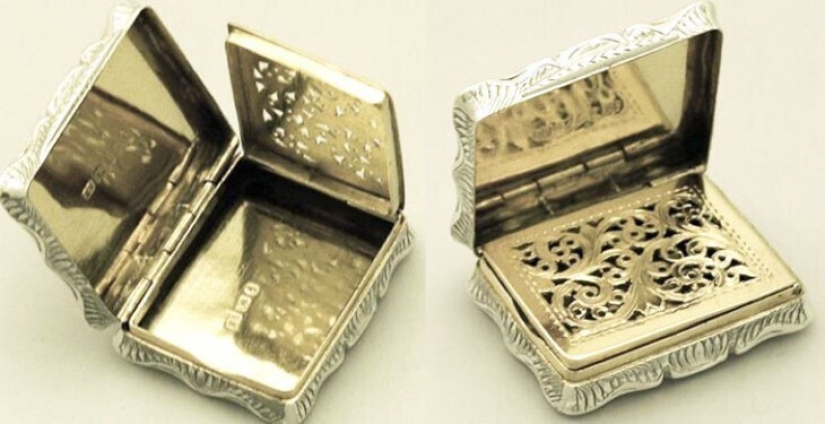
So ladies carried a bottle of smelling salts or a small cruet, which was a cotton swab dipped in vinegar or smelling salts. At the first feeling of discomfort was supposed to open the lid and take a breath.
To use mailboxes to an exchange of letters became seamen in the sixteenth century. The sea route from Europe to India was long and dangerous, and thus sailors reported to trusted recipients on the number of people on the ship, the direction and purpose of journey.
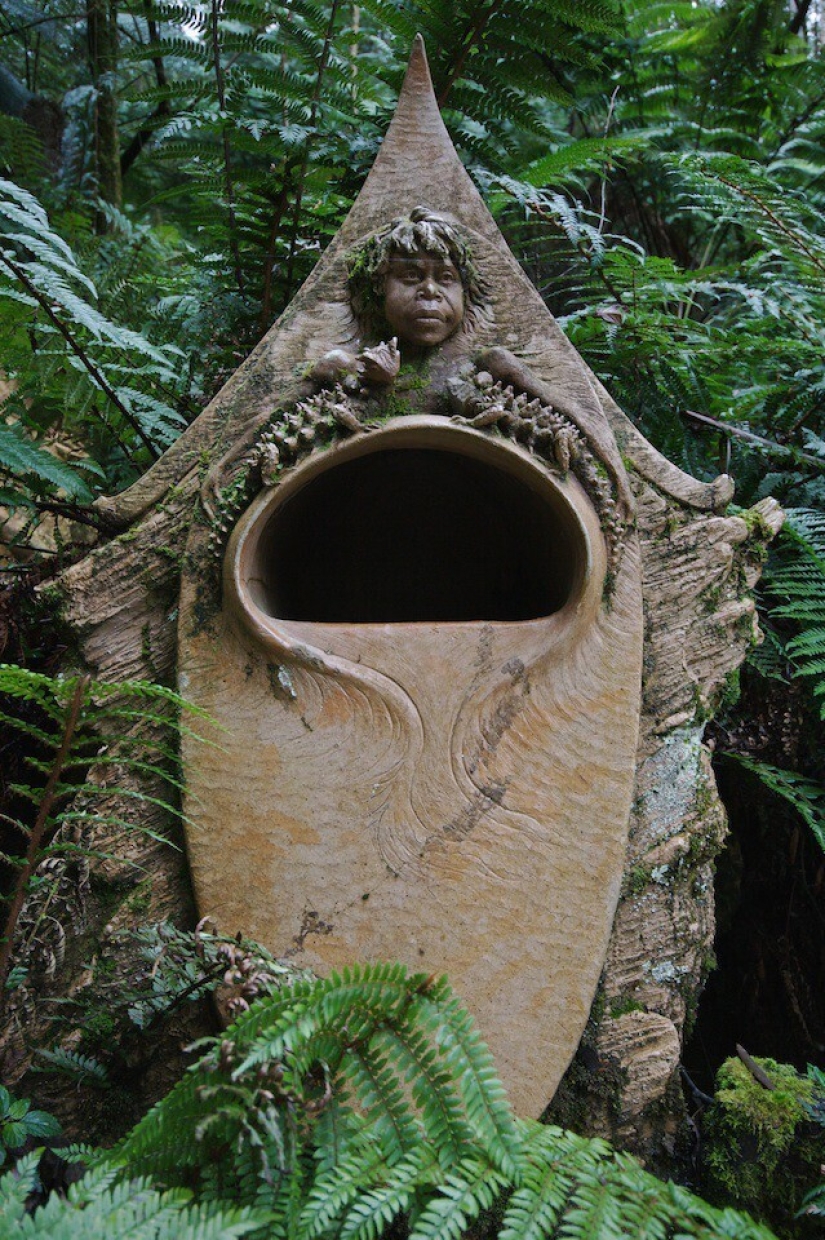
The Cape of Good Hope at the southern tip of Africa became a place of exchange of letters. Messages placed in the boxes and hid in the appointed place, concealing them under the stones to a stranger could not find a note. Passing ships docked in the Bay and took the record from the cache, instead of leaving your.
Such tokens were paid in brothels for naughty services in the XIX century in the United States.
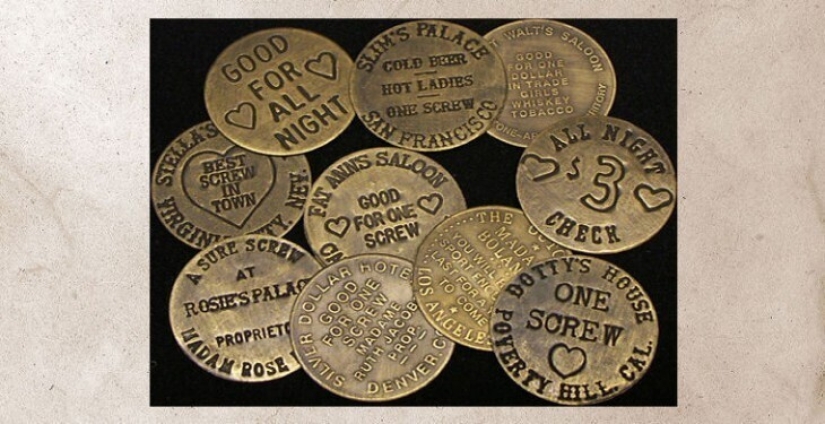
The use of the tokens was convenient for the owners — it minimizes the ability of women to keep more money and to promote client in the process.
Notches on borrowed the item was made simultaneously on both sticks.
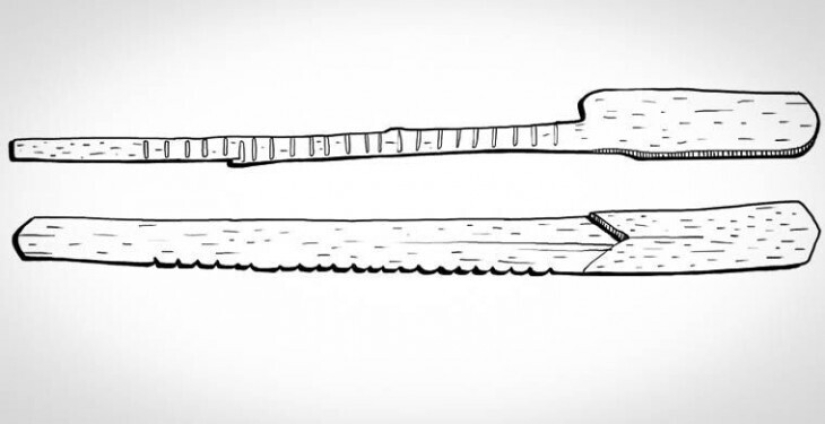
One was kept by the buyer, the other seller, which excluded the fraud. When the debt is repaid, poles were destroyed.
Used in Germany in the XVI–XVII centuries for public humiliation bad musicians, but also as punishment for a minor violation of the laws: defamation, profanity, heresy and blasphemy.
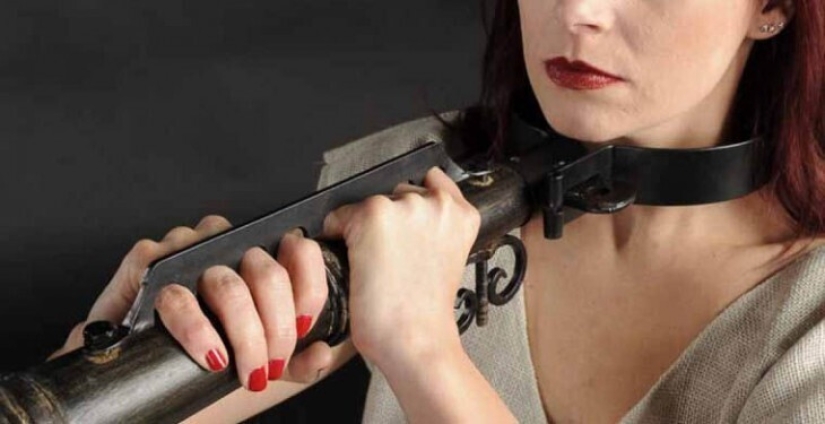
The name of the tool received for the appearance of the flute. Endplate produced from different species of fruit trees. The metal ring was worn on the neck, fingers inserted into the clips. The heavier the wine, the more squeezed the strap.
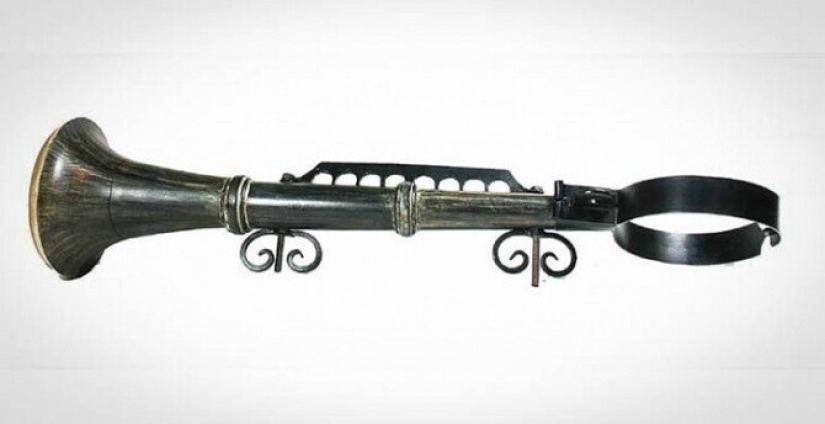
The punishment is aggravated by the fact that the accident was put in the pillory in front of a jeering crowd. Everything looked like an accident playing the flute, and the pain that he had caused the laughter and delight of the audience. Sometimes the torture could last for several days.
Awe-inspiring suitcase looks as if it withdrew from the maniac or took the memory from filming another Hollywood film about vampires.
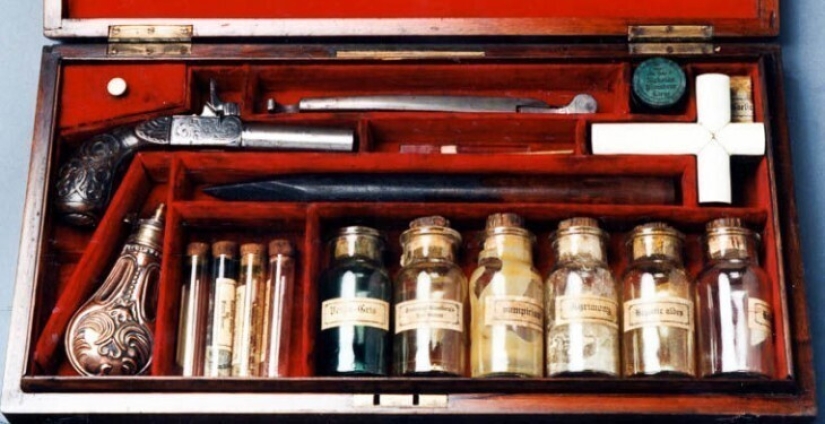
But in fact, this set — not a sham and not accessory for Halloween, and it's the real thing from the life of our ancestors.
A small vessel with a narrow neck is made so that it was possible to push it right to the corner of your eye. Its purpose is to collect tears and a history stretching back more than three millennia.
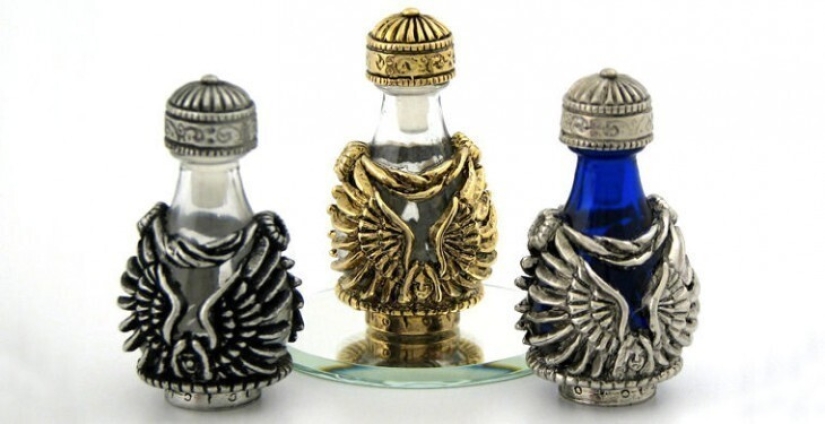
Vessels tears were popular, for example, in Persia, men, returning after the battle home, the first thing checked of the tear bottle their wives to determine how much they missed you.
In the Victorian era, when the quality and quantity of illumination on the streets of major cities is poor, crime in the streets was common.
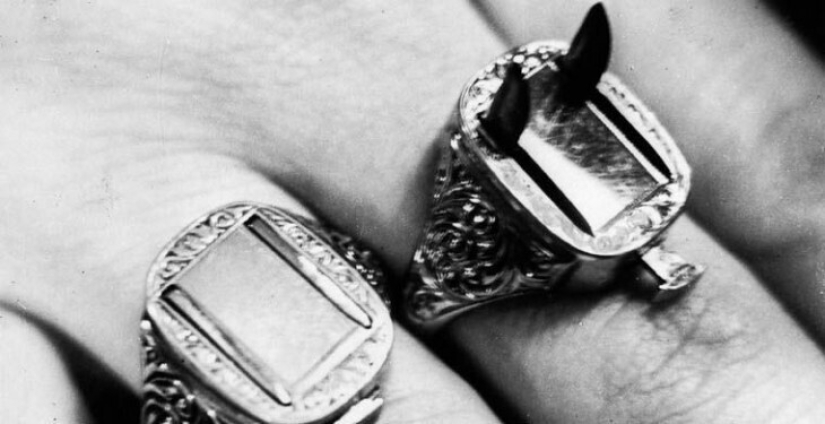
Therefore, to ensure their safety Victorians invented a variety of devices. With two small buttons in the ring leaned sharp blades and an advantage in a street fight immediately was on the side of its owner.
Martsipani called steel or cast iron grates-caps that were put on the graves.
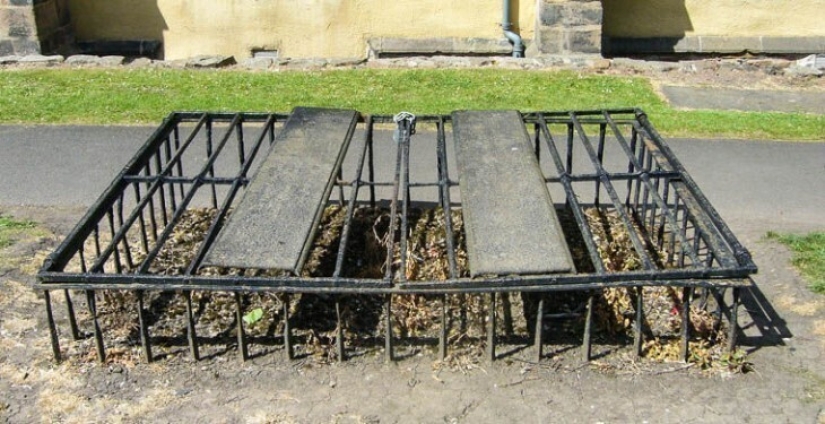
In the early nineteenth century with the development of medicine and of anatomy in England and Scotland, there was a big need for corpses to dissect. But God-fearing Victorian society dominated by persistent hostility to the graves of the rules: even cremation was seen as something horrible, satanic and terrible.
In the late nineteenth century to produce mechanical box with the voices of birds began Blaise Bantam.
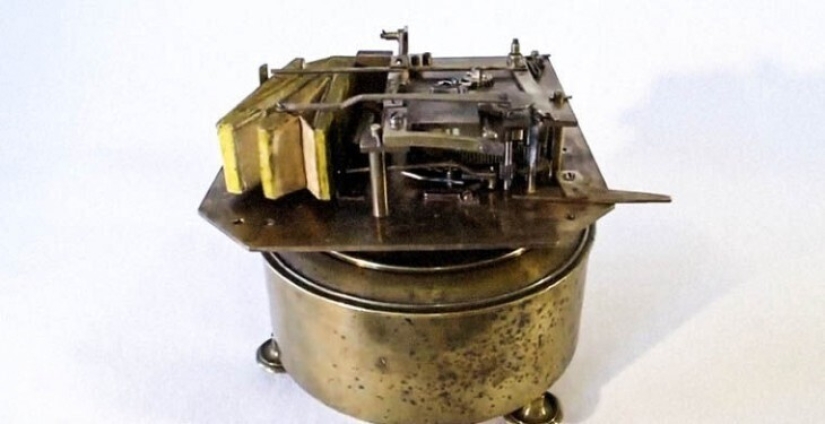
His case was continued by his son Charles and grandson Lucien, improve the mechanism in the twentieth century — their production work up to 1950‑ies.
Inside screw of belogolova as bait put a small piece of cloth soaked in honey, blood, resin or aromatic substances.
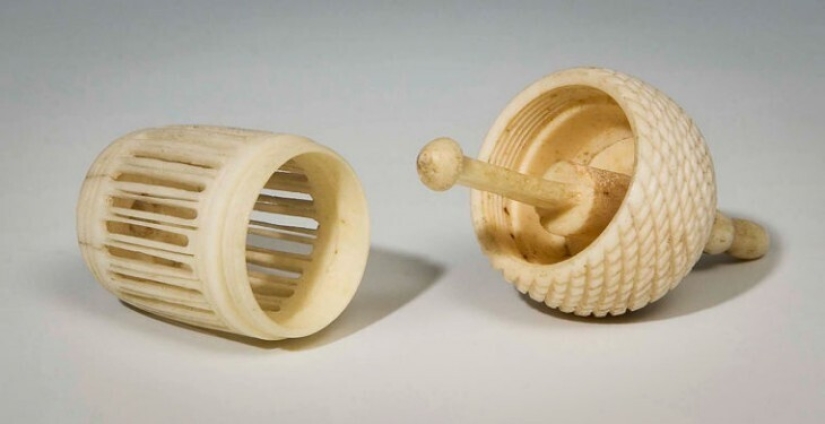
Cause inside insect sticking to the bait. Belogolovkin wore wigs and women's hairstyles the inside, under your clothes and at the neck like a necklace, and put in the bedroom by the bed. Catching fleas was a matter of everyday and to some extent even erotic.
Doctors in the past were only men, and they were forbidden to directly touch the senior patients. Therefore, for the diagnosis using a special doll. They were made of ivory and mammoth bone, wood, and even mother-of-pearl with a height of 10-25 cm
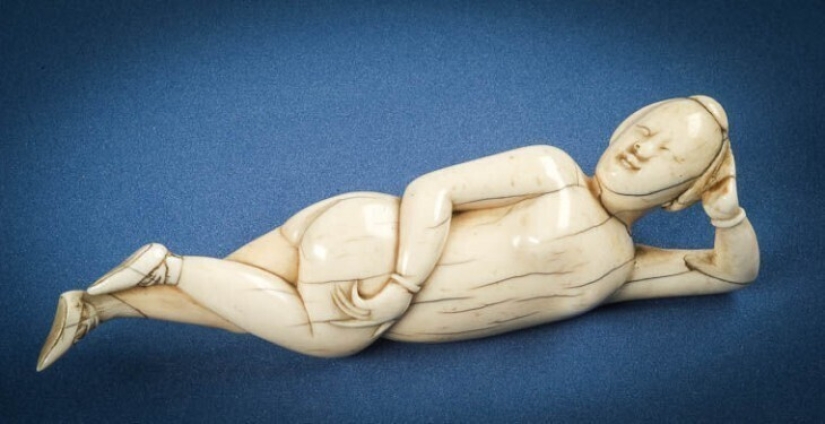
Interesting detail: on some Chinese dolls are visible bandages for the formation of a small foot. Bring the doll doctor or the ladies had their own historians while it can't install.
In the days of the ancient Romans didn't have soap, shower gels, shampoos, scrubs, and other achievements of chemistry.
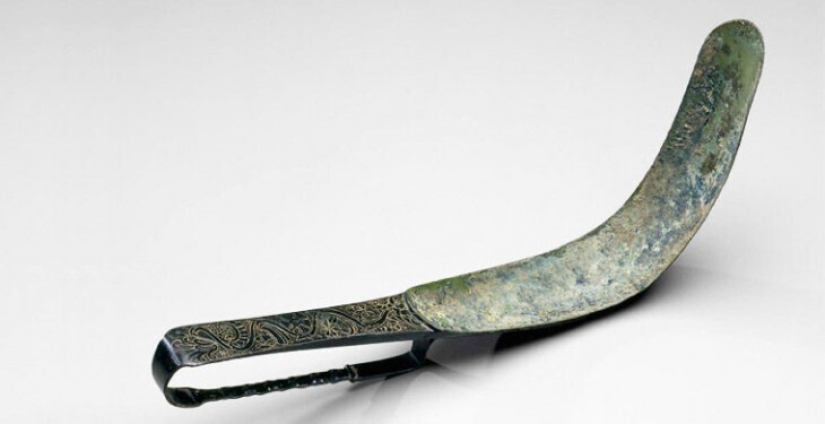
Romans all the dirt, sweat and dust from the body was scraped such scrapers.
The invention belongs to Dr. George Merriweather, who lived in Whitby in England in the nineteenth century.
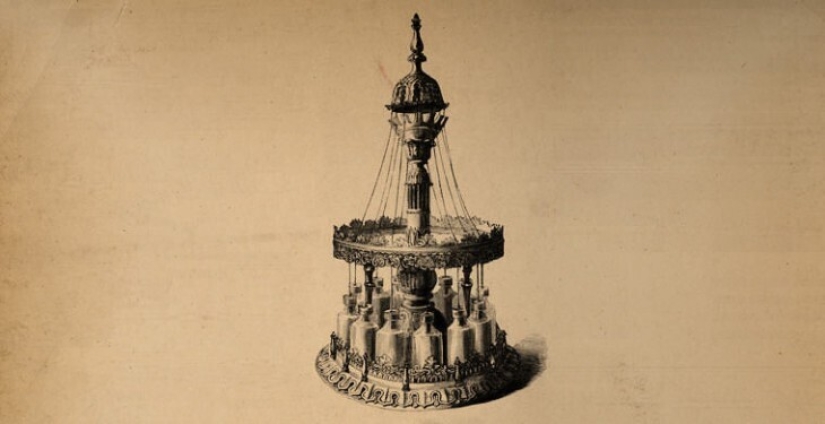
Once the doctor noticed that before the onset of thunderstorms leeches begin to restless, and decided to use this feature. He came up with a clever Assembly, which was called "predictor of the storm."
The circle was put 12 bottles in one pint. On the neck of each bottle there was a metal tube with a piece of whalebone and wire attached to the hammers. Sensing the approach of a storm, leeches began to climb up the bottle and dumped whalebone, which, in turn, pulled the wire and powered hammers, darawsha the bell.
The toasters in the nineteenth century was extremely popular and that's why were embodied in a variety of designs.
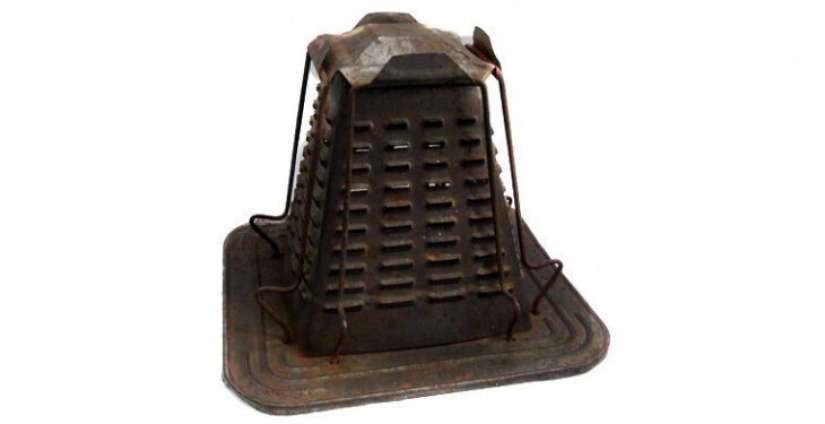
For example, some particularly expensive models have a ceramic core, heating more evenly, double walls and a removable "door", to make it easier to clean the inside of the device and two removable wire stand to put the pieces of bread for heating or to fresh toast not so fast cooling down.
A simpler model was a simple tin can pyramid with holes in the side panels as buildings — under the pyramid of smoldering coals and thereby roasted leaning against the panels pieces of bread.
The structure of the extractor is quite simple: in the long hollow tube is a kind of screwdriver, it screws down into the wound, feeling the bullet catch and pull.
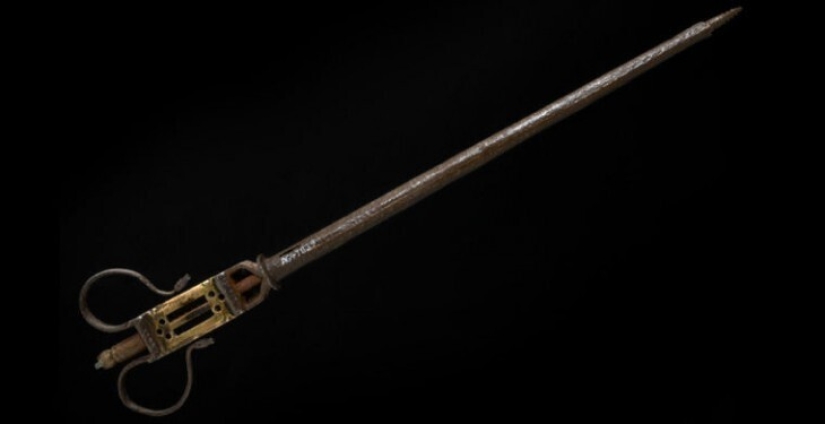
Despite its apparent benefits, extractor bullets often brought more trouble than relief: anesthesia and antiseptics in those days practically was not, therefore, many patients die of shock, and others from recorded infections.
The device it's very simple: smoke enema was similar to normal, but instead of pears she had fur of pork stomach, which was served to tobacco smoke into the anus of the patient.
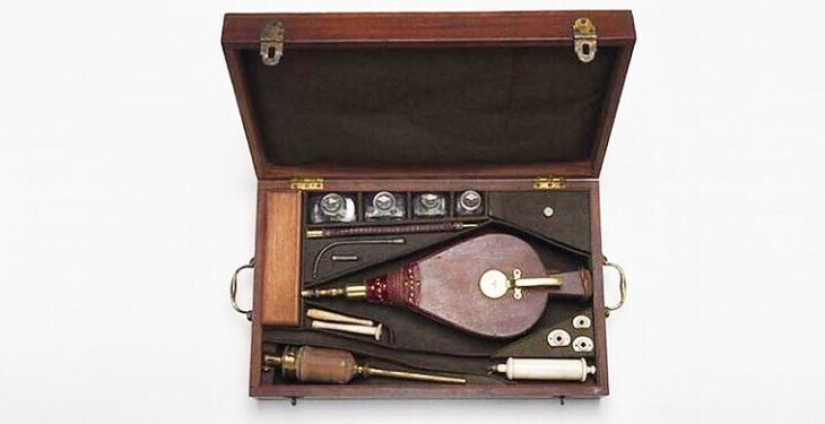
Tobacco was considered a good remedy for sleepiness and cold and it was even prescribed to patients. This procedure, as it was believed, was to help with pain in the stomach, and also revived drowned. It was believed that the smoke dries up all the excess moisture in the body.
Chatelain (in the Russian language this word really and there, if translated literally — "a bunch of the mistress of the house"; in English pronunciation Chatelaine) was a decorative ring detail, fastened by a belt.
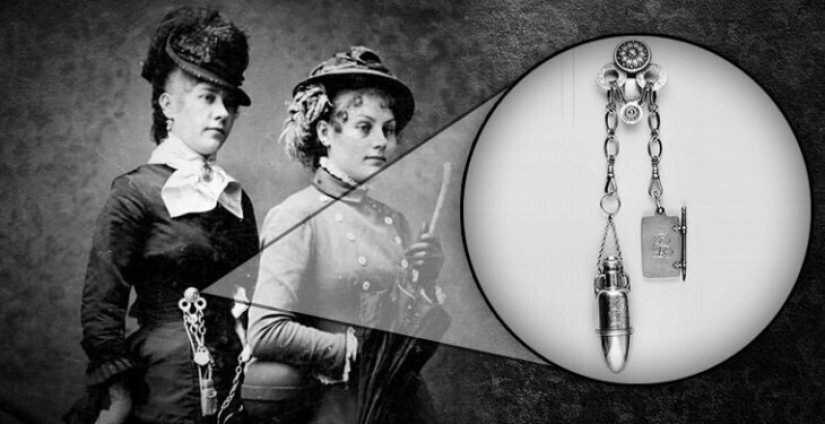
With this bunch hung an impressive number of chains, which, in turn, is attached to different things, which could require the owner of the house and was supposed to always be at hand: keys, thimbles, watches, scissors, print, cruet (in case you become ill).
As in the current time, the citizens of the XIX century was suffering from the burglar. As protection applied revolutionary mechanical alarm against burglars.
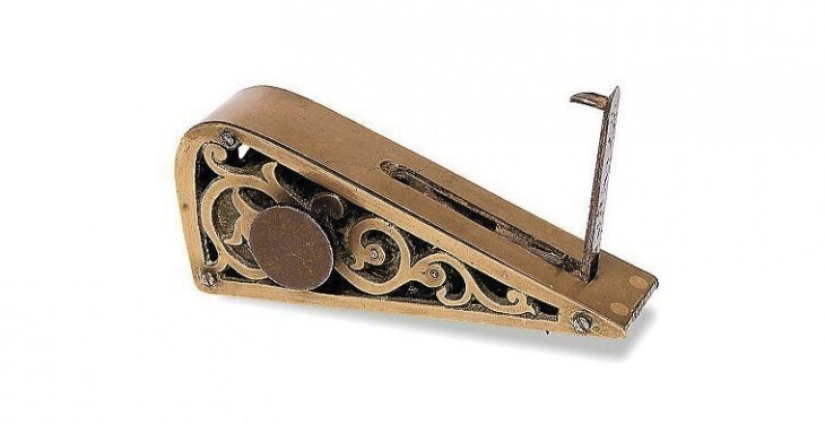
The alarm is put under the door from the inside, the door propped pin. When the door is opened from the outside, the pin fell and got on the call, who loudly announced to the owners about what strangers are in the house.
An artificial leech was invented in 1840, to reduce the use of these leeches.
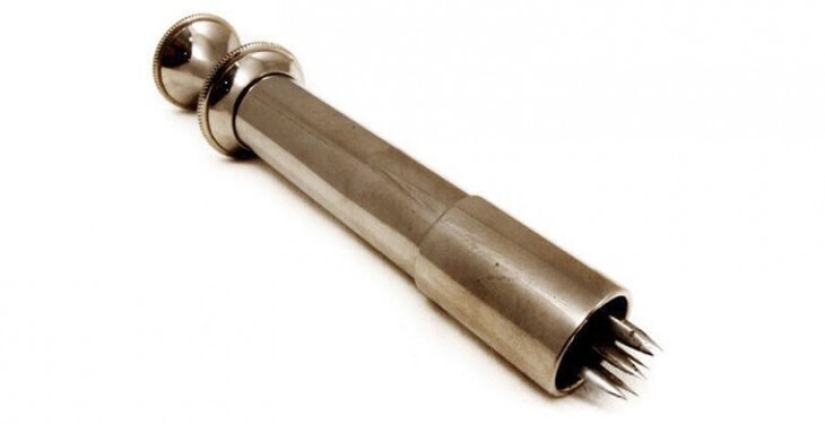
It was believed that an artificial leech more effective, hygienic and sterile, although one of its kind inspired a far greater terror than a living creature.
Keywords: Science | History | Pictures | The world | The past | Wonder items
Post News ArticleRecent articles

One head is good, two is better. Cute animal one is good, two is better! In this issue you will see not one, but two lovely ...

Blogger Steve spring (Steve Spring) shared three effective tips on how to not only lose weight that kills you, but also to lead a ...
Related articles

Since 1970‑ies in the neighboring cities of Rostov-on-don, Shakhty and Taganrog was sent to jail 37 serial killers, who killed ...

When 19-year-old Marilyn Monroe started to pose for Earl Moran in 1946, she still dreamed of becoming an actress. Moran's already ...

If Australia is the most dangerous continent on the planet, then the Gibson Desert located in the west of the continent is its most ...

The beginning of winter is a time when the sun becomes a rare guest in our lives. In the morning, the alarm clock rings in pitch ...